By Sid Perry
I took my Wavewalk 500 on a similar fishing trip last year. This time we already had snow in the mountains.

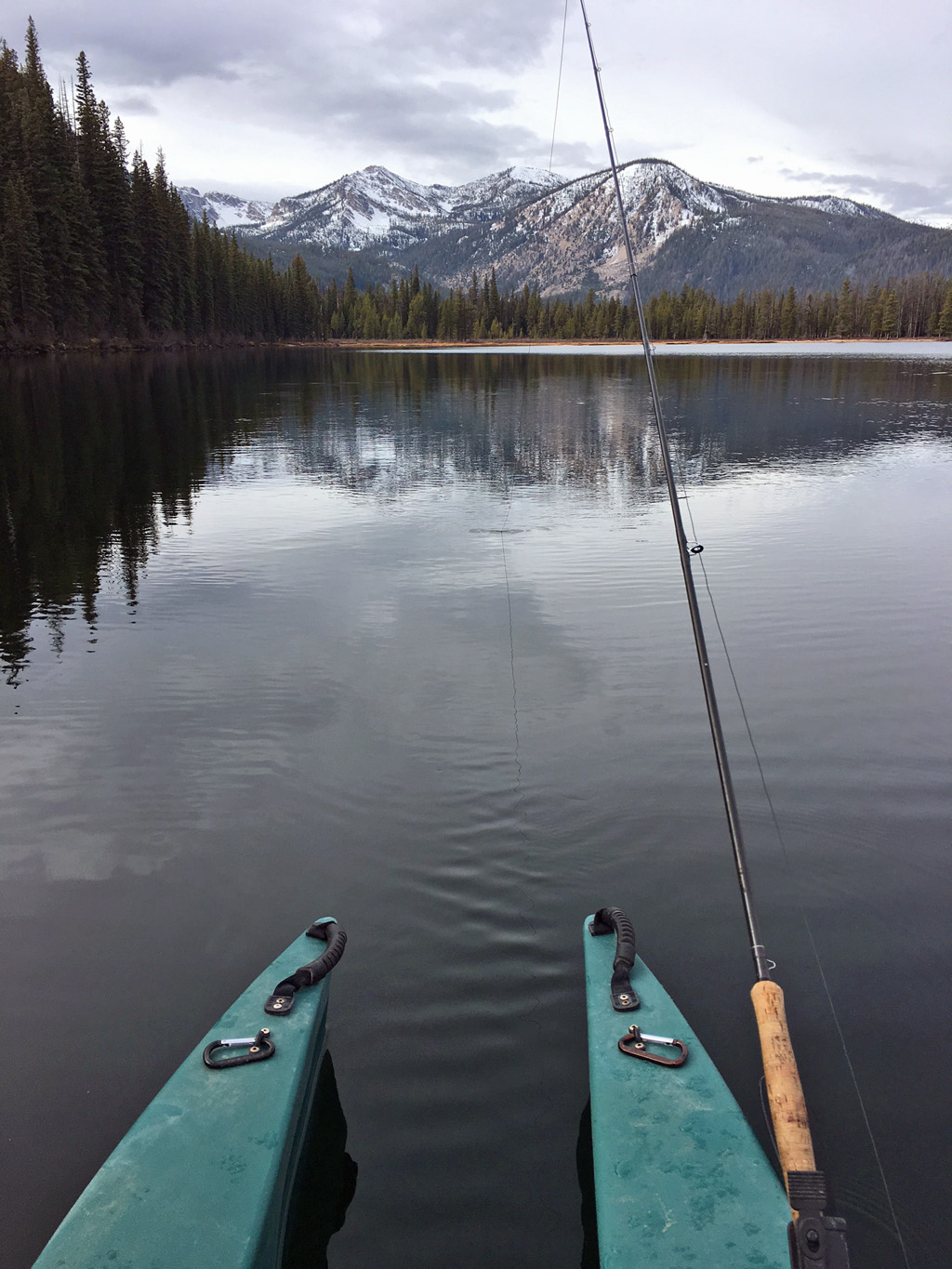
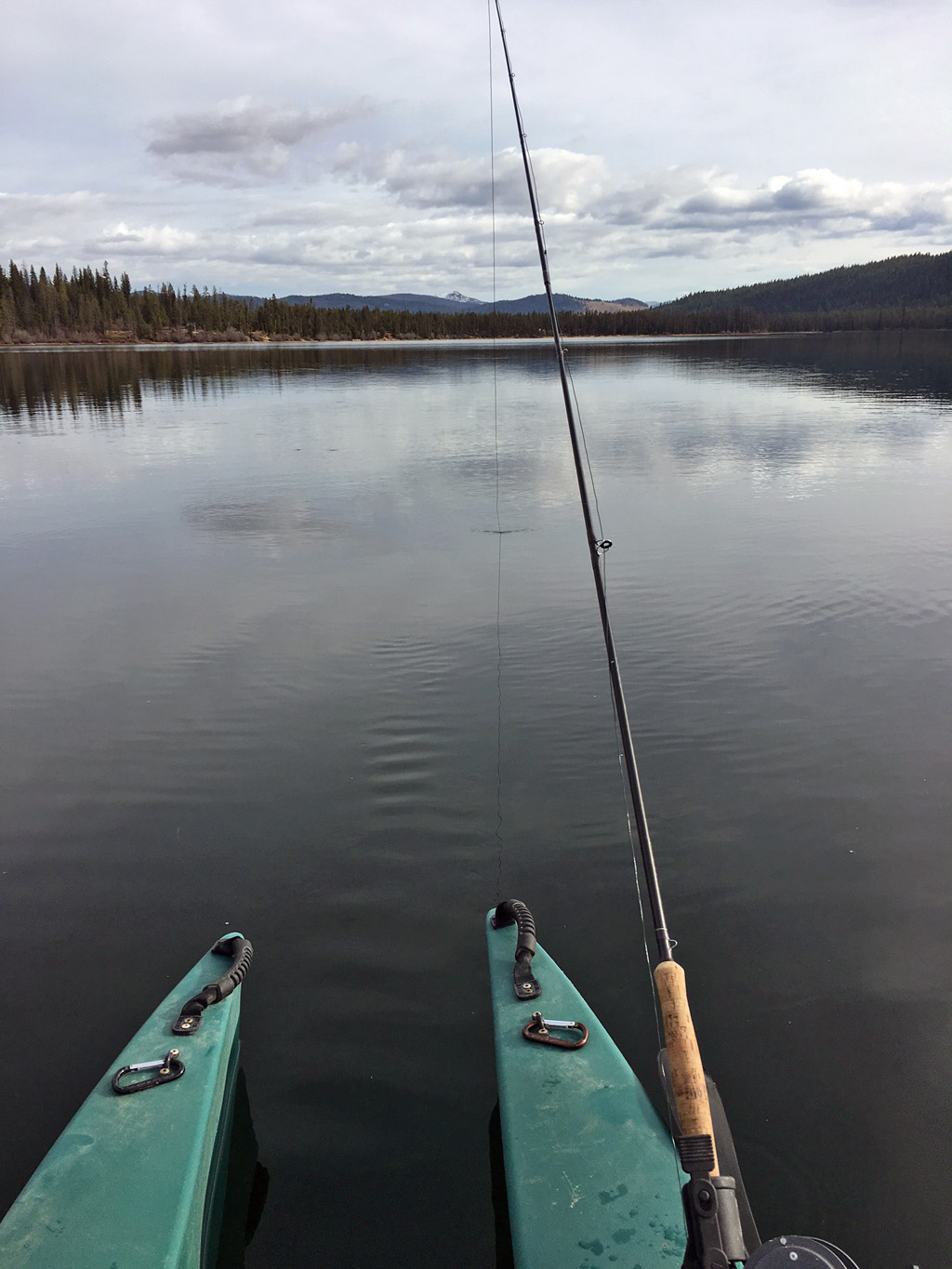
I took my Wavewalk 500 on a similar fishing trip last year. This time we already had snow in the mountains.



Well I haven’t sent in a report lately because I have been deer hunting and the Wavewalks were not involved. But now it is on to ducks and the Wavewalks are an essential part of our arsenal.
We have long paddles in strong currents and in rough weather and the Wavewalk handles it just fine!
The W700 is particularly good as a duck boat. Two hunters can carry their gear and tandem paddling makes the currents no big deal.
On this trip we were able to use the outgoing tide as well as the current from a river to make the trip back home easy. According to the GPS we were doing 7-8 mph paddling with the current.
I have designed a blind for the boat but have yet to finish building it.
Most of the time the Wavewalks are only used as transportation. We are also able to transport 3 dozen deeks, two hunters, shooting boxes, guns, camo nets, all in the W700!
Enjoying the stability and versatility of the these kayaks.
Here are a few pictures from our latest duck hunt.
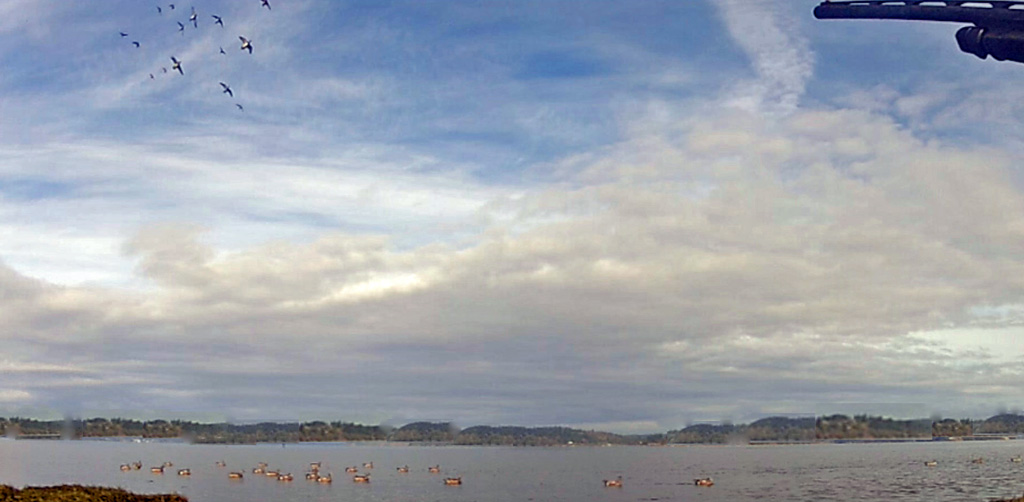
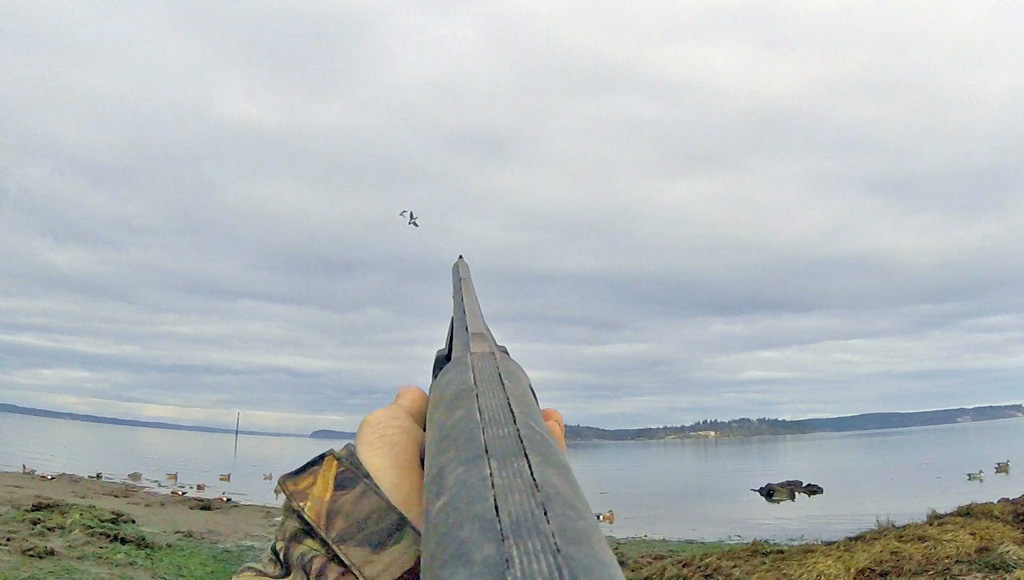

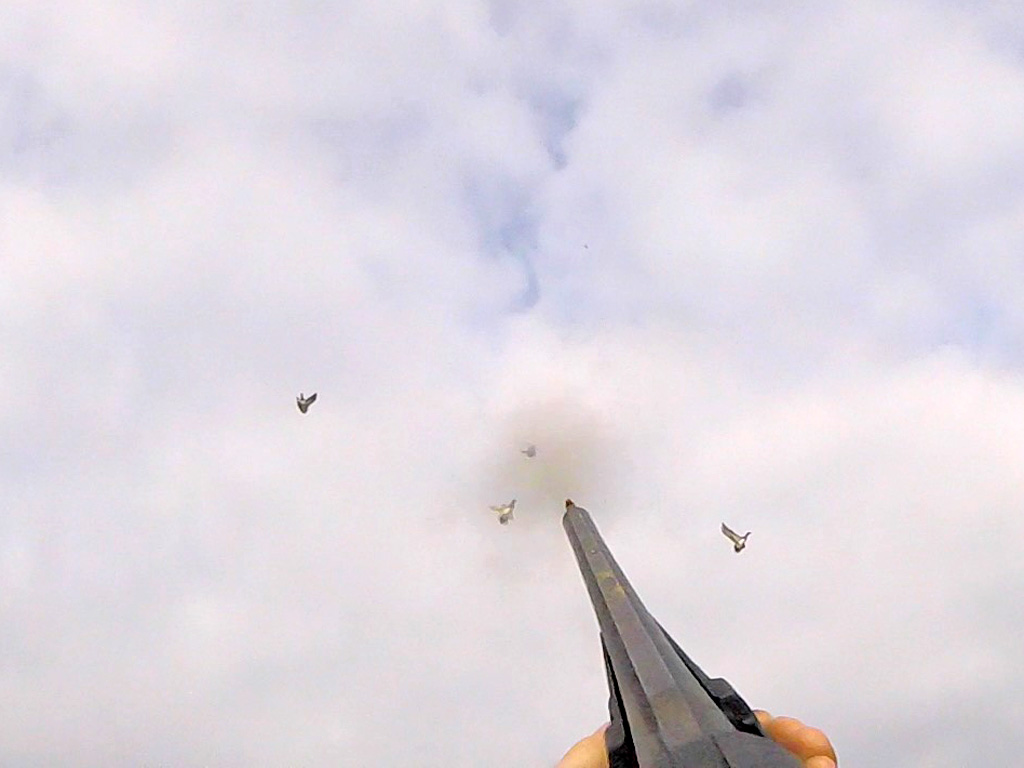
You may have an outfitting project in mind, such as attaching a rod holder to your kayak, or you may just wonder how strong are Wavewalk kayaks and boats built.
More generally, how well do aluminum rivets work when used in kayaks?
Before going further, we need to explain that nearly all modern kayaks are made from Polyethylene, a polymer (plastic resin) softer than steel and aluminum, and even softer than fiberglass, which is why it requires the use of special rivets that split in three and provide a better grip over a broader surface.
These rivets go under commercial names such as Tri-Fold, Tribex, etc.
Alumium rivets are used for attaching kayak parts together, such as the 14 rivets that attach the W700 Saddle part to the Twinhull part.
They are also used for attaching accessories such as handles, pad-eyes (eyelets), etc.
Here is a little experiment we did –
We riveted together two pieces of Polyethylene that we cut from a part of a Wavewalk kayak. We used just one rivet for this.
We hung one end of the joint pieces of plastic from a basketball pole, and on the other end we hung a fish scale.
We hung a travel bag from the fish scale, and filled the bag with bricks.
We stopped after ten bricks, because the dial on the fish scale had ran full circle, and stopped at 50 lbs.
At this point, neither the plastic pieces nor the rivet showed any sign of stress.
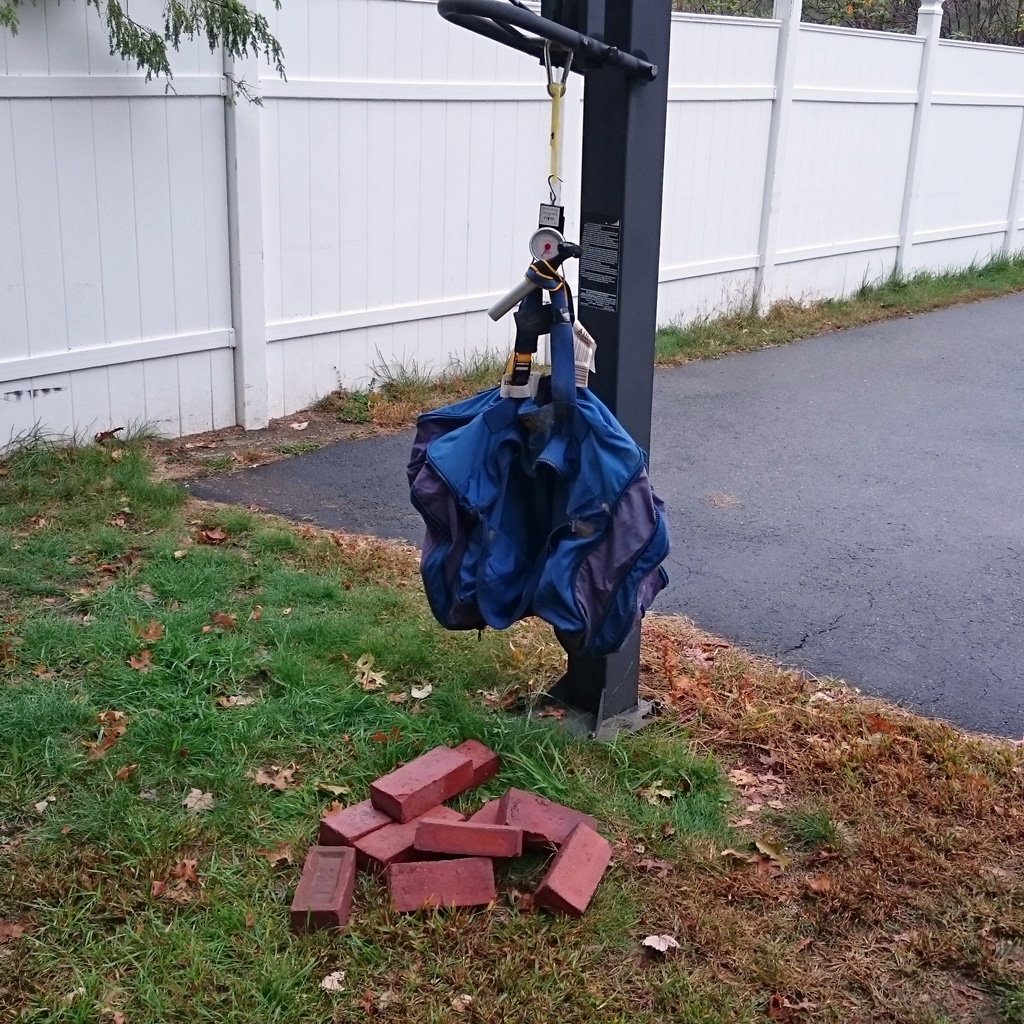
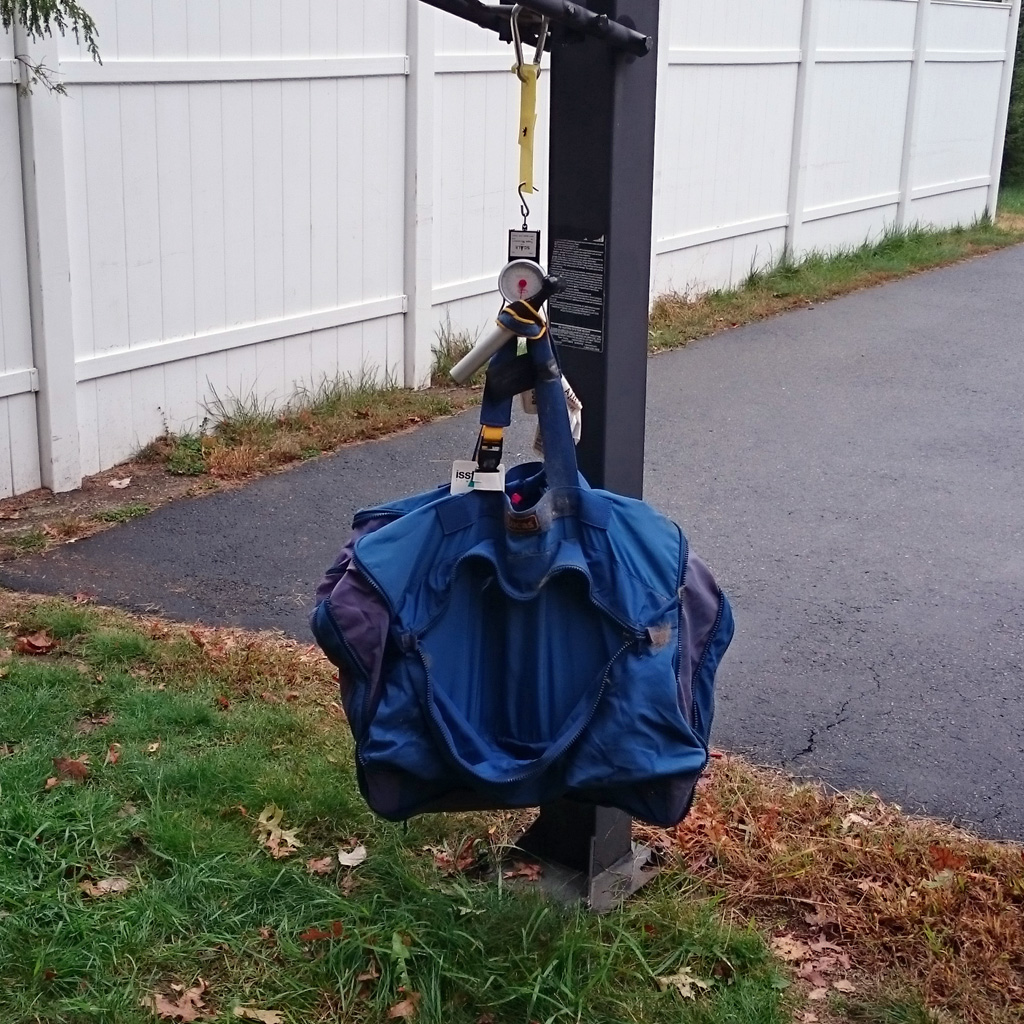
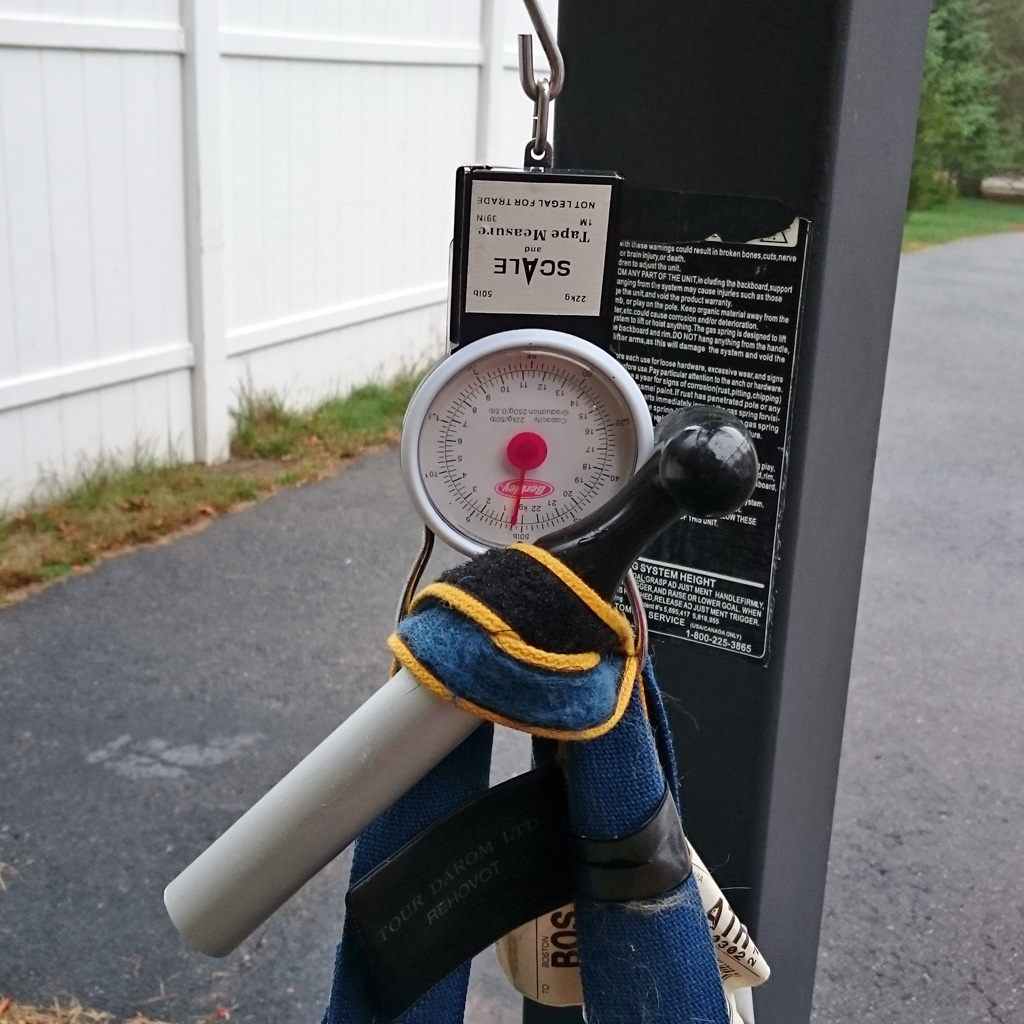
Needless to say that the effectiveness of a rivet depends on more than just the force applied on it in lbs, and additional factors are very important, such as the angle of the force (vector), leverage (a critical factor), the temperature of the plastic (hot plastic is softer), etc.
If we had attached the parts in this experiment differently, we would have seen different results.
Do you have any questions for us?
We took our W700 Demo unit out and had a blast running our little Honda 2hp (gas) & our 36lb thrust electric around.
This is the only kayak I know of that has the ability to be used with a paddle, or an electric trolling motor, or a gas out board for propulsion.
My son just loves to paddle, and as we all get older a little help getting back to the launch with an electric or gas outboard sure comes in handy.
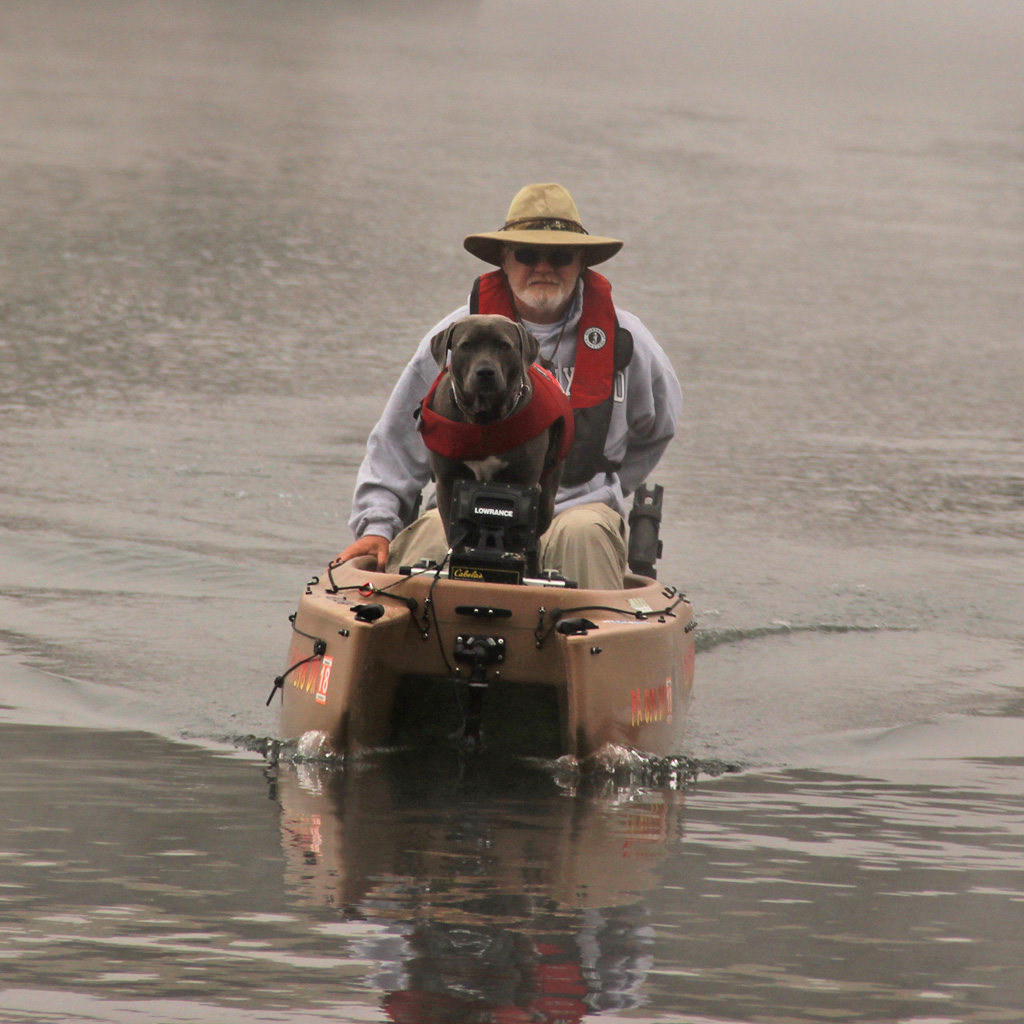
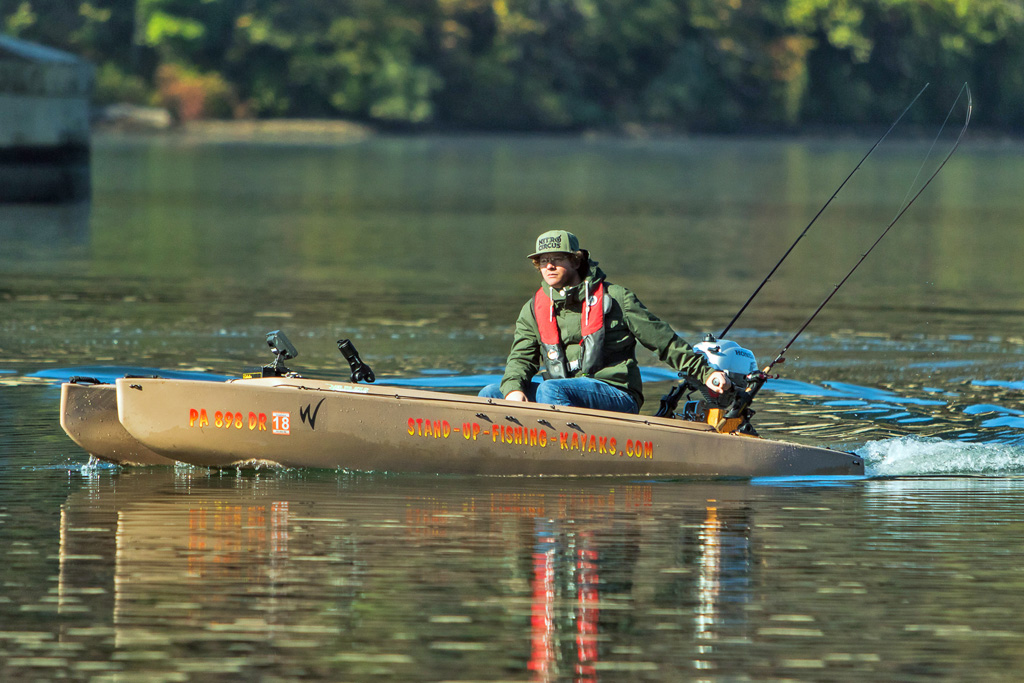
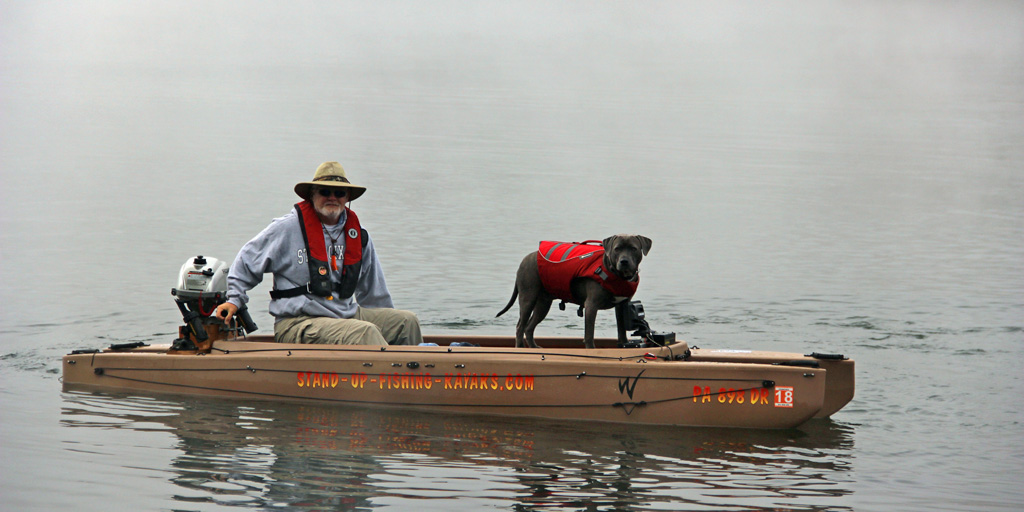
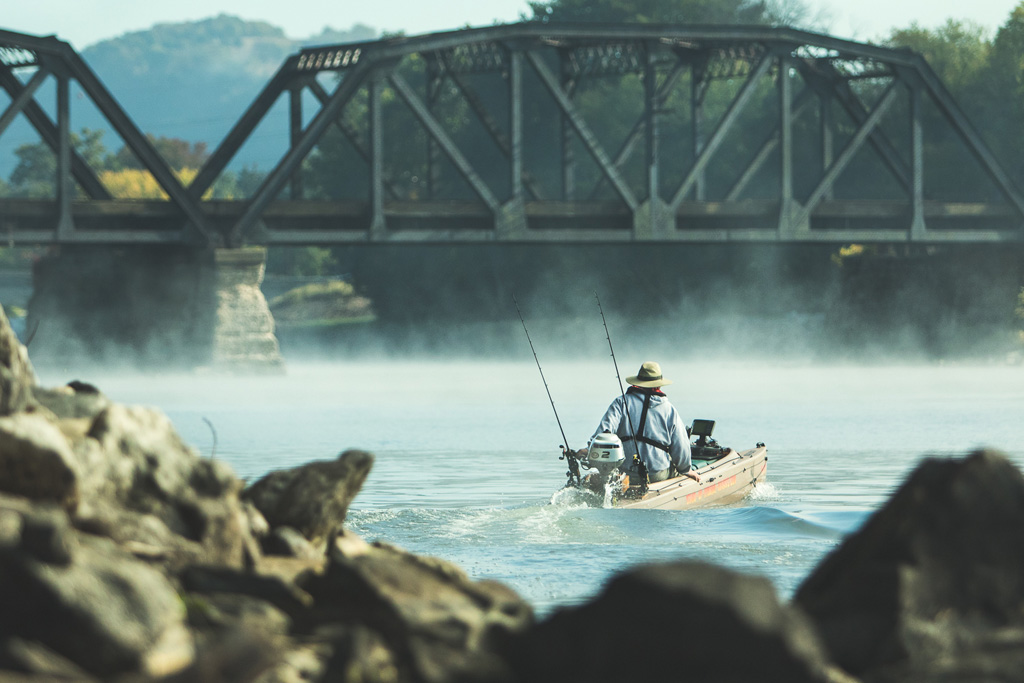
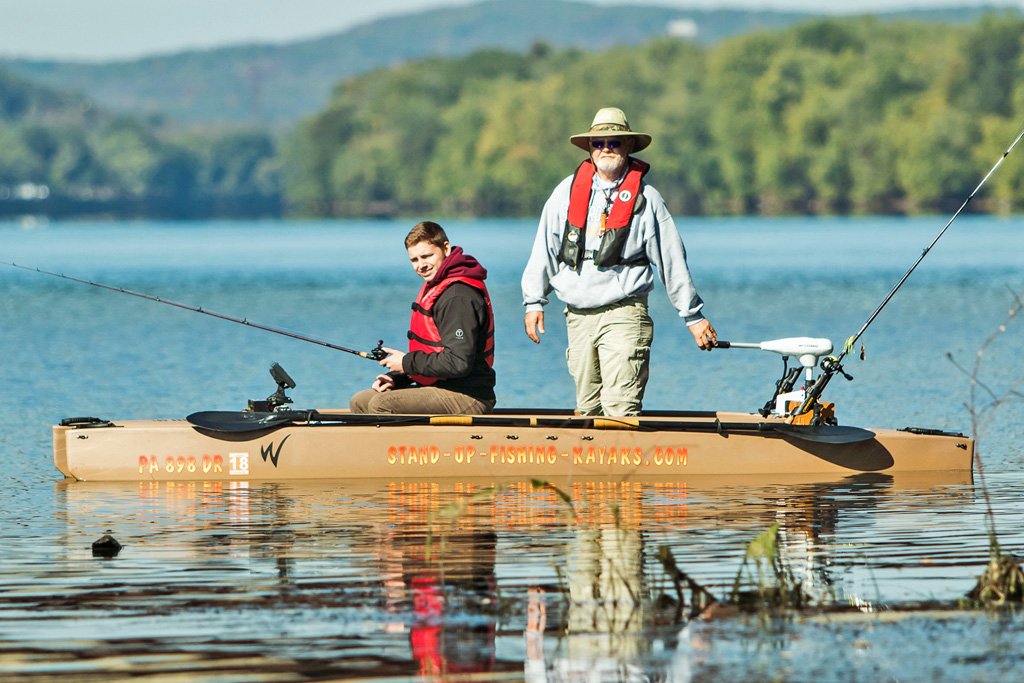
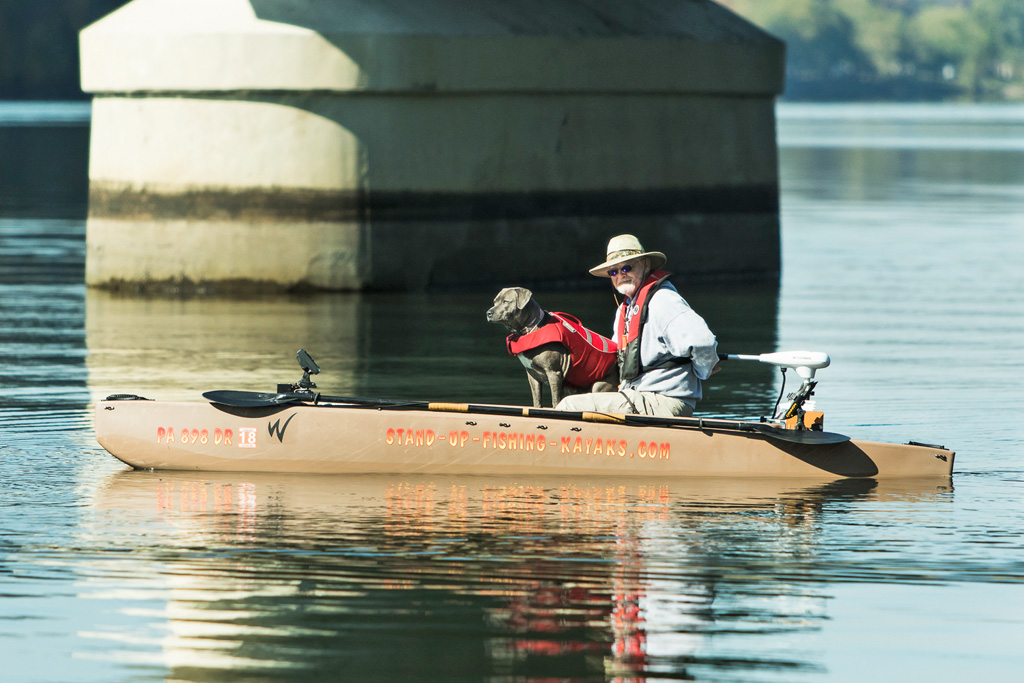
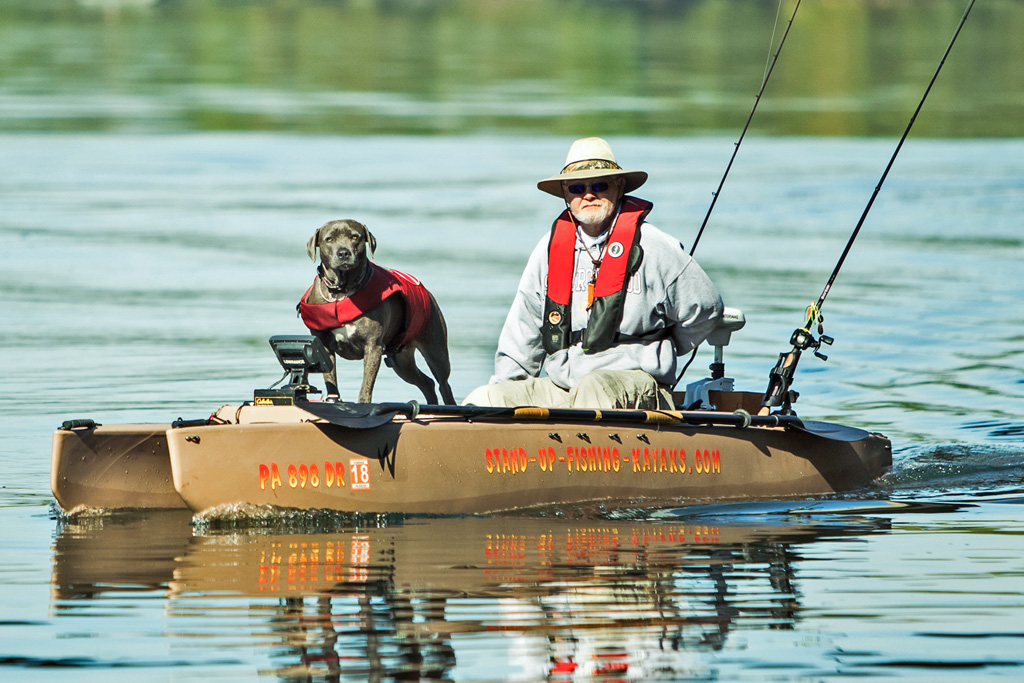
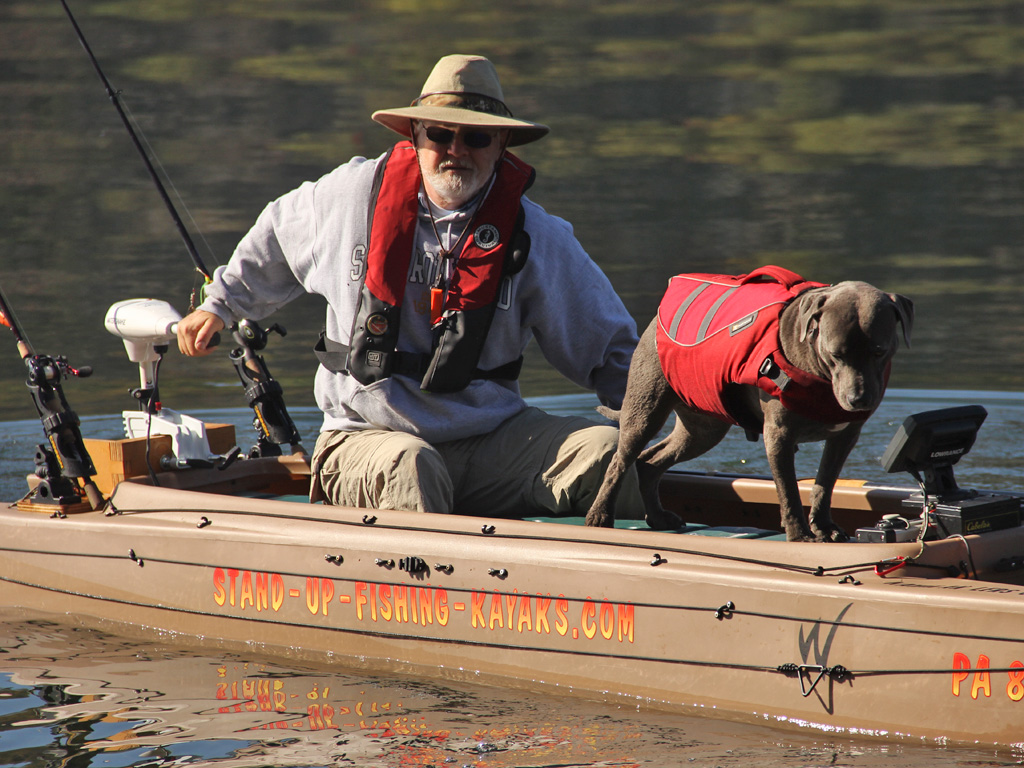
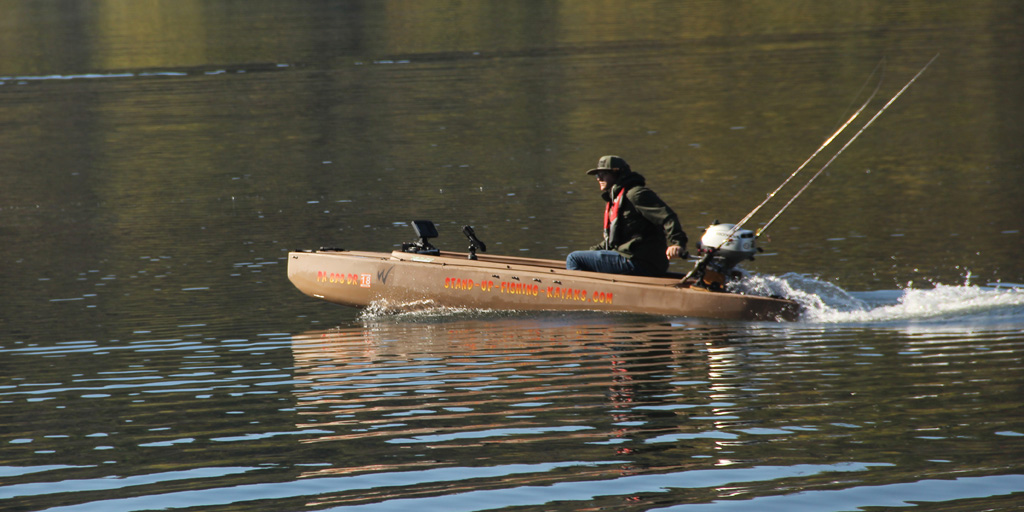
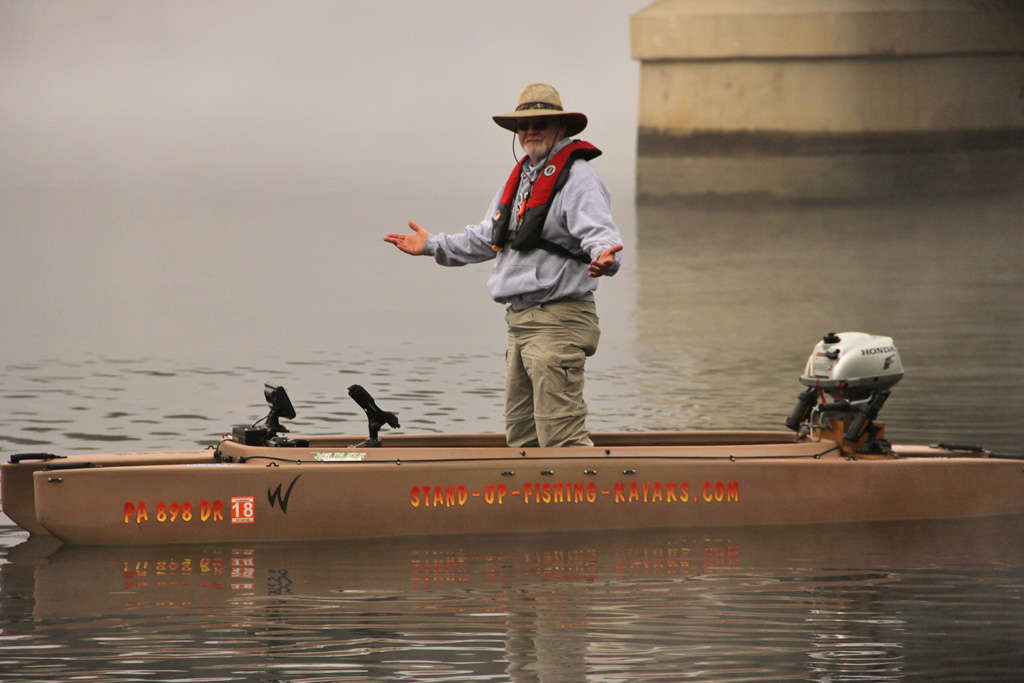
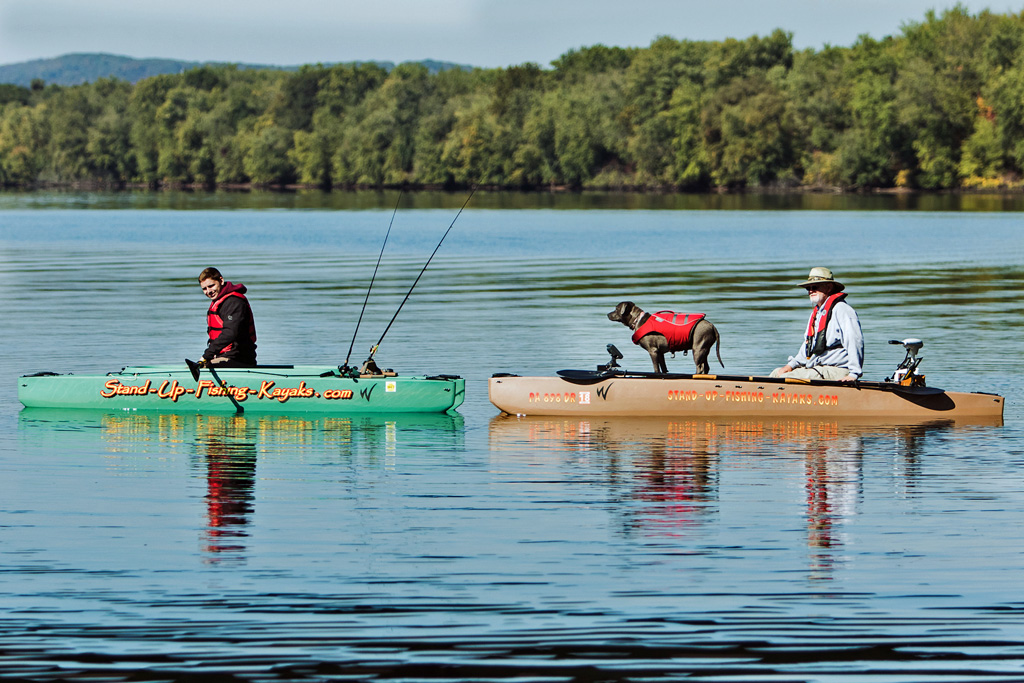
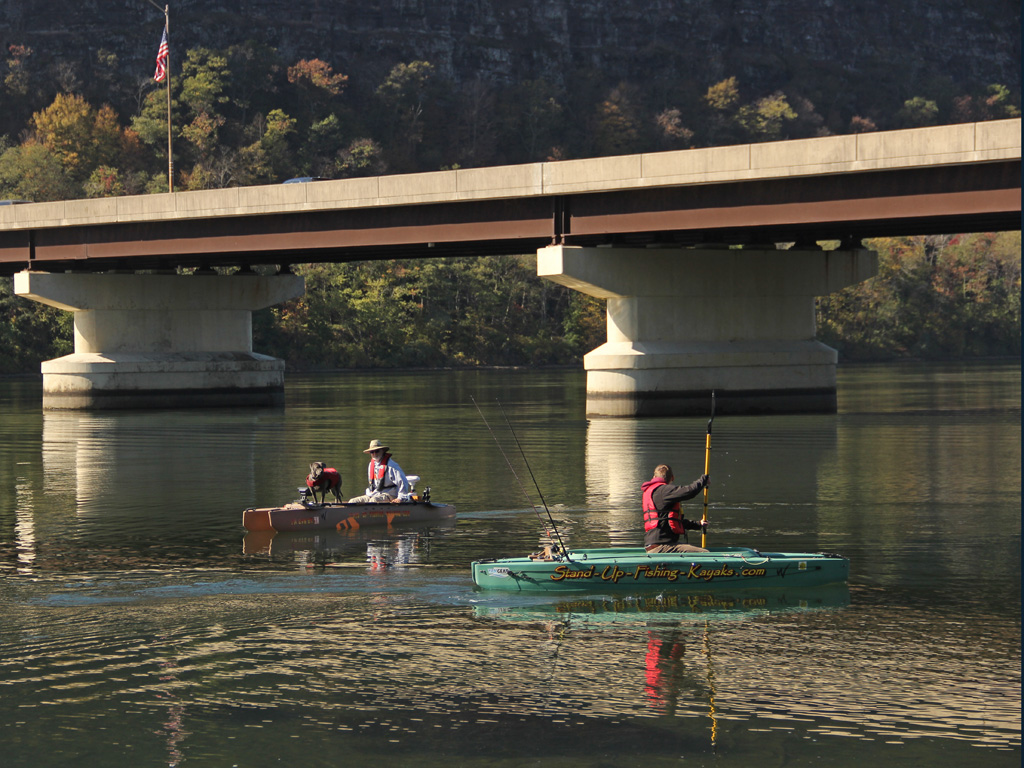

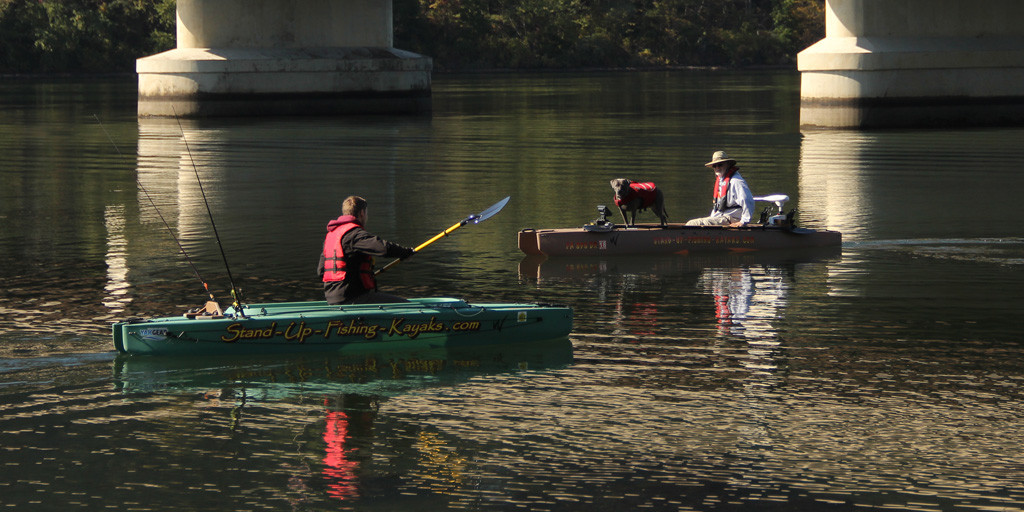
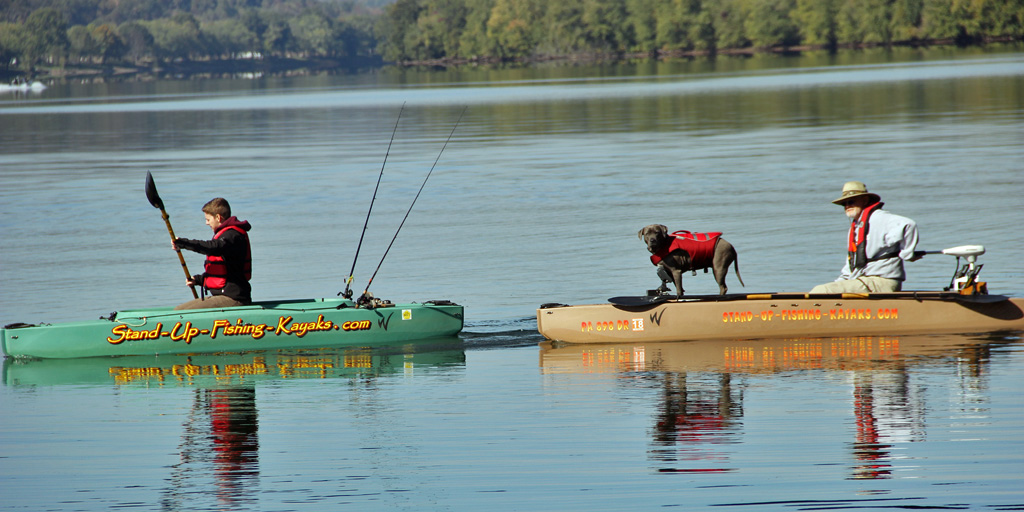
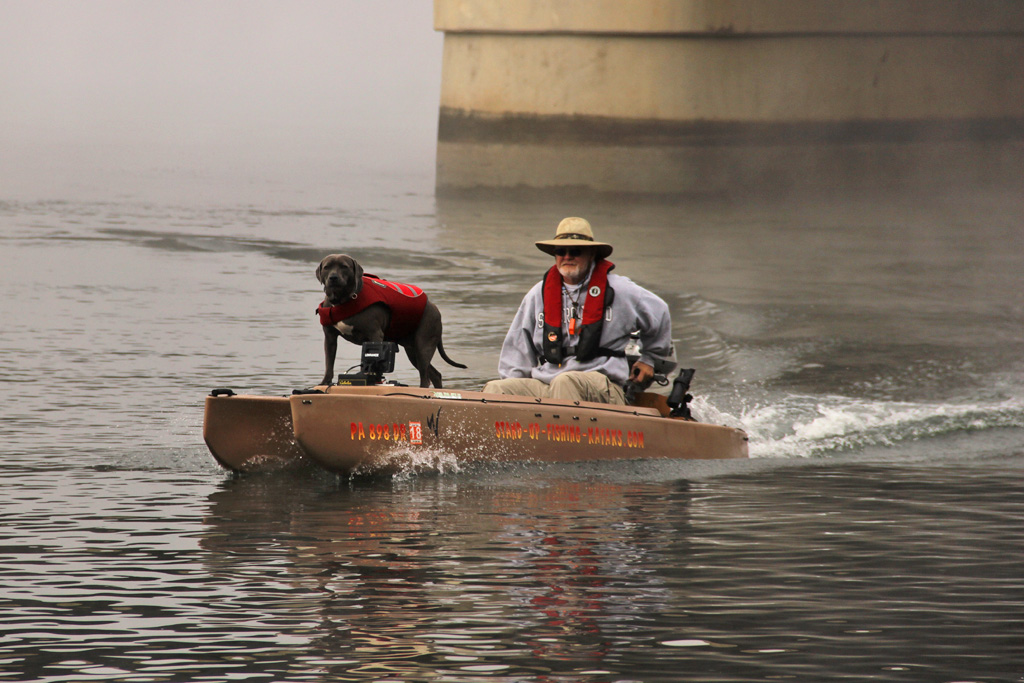
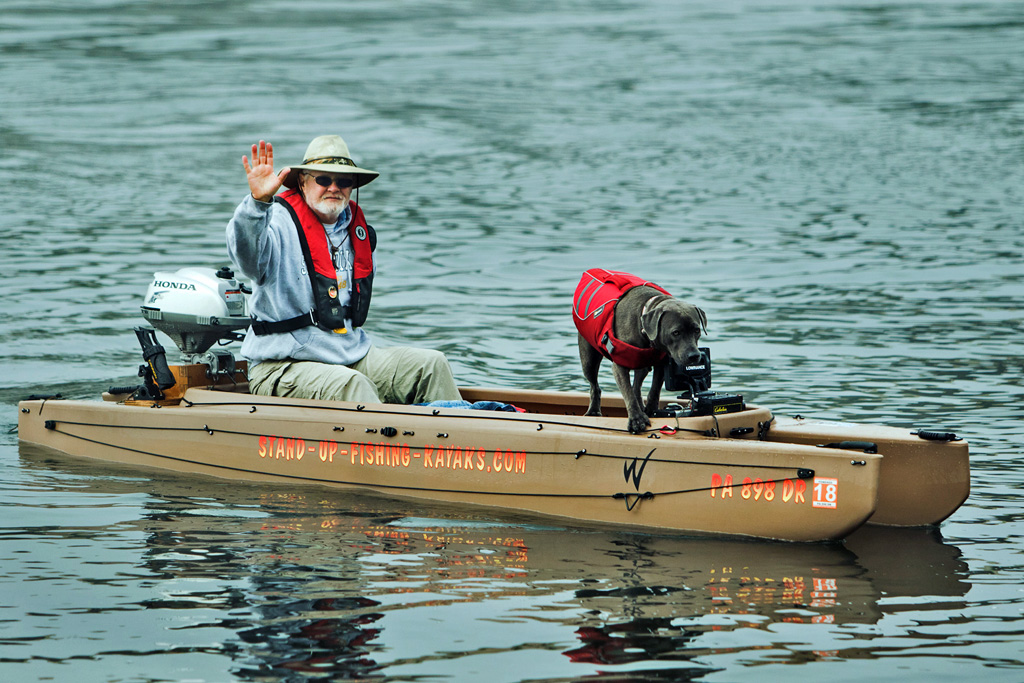
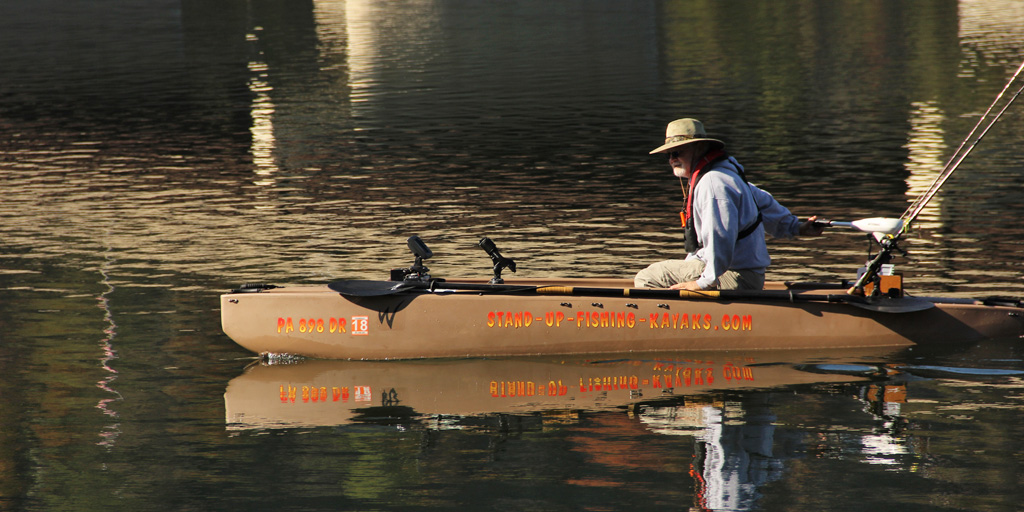
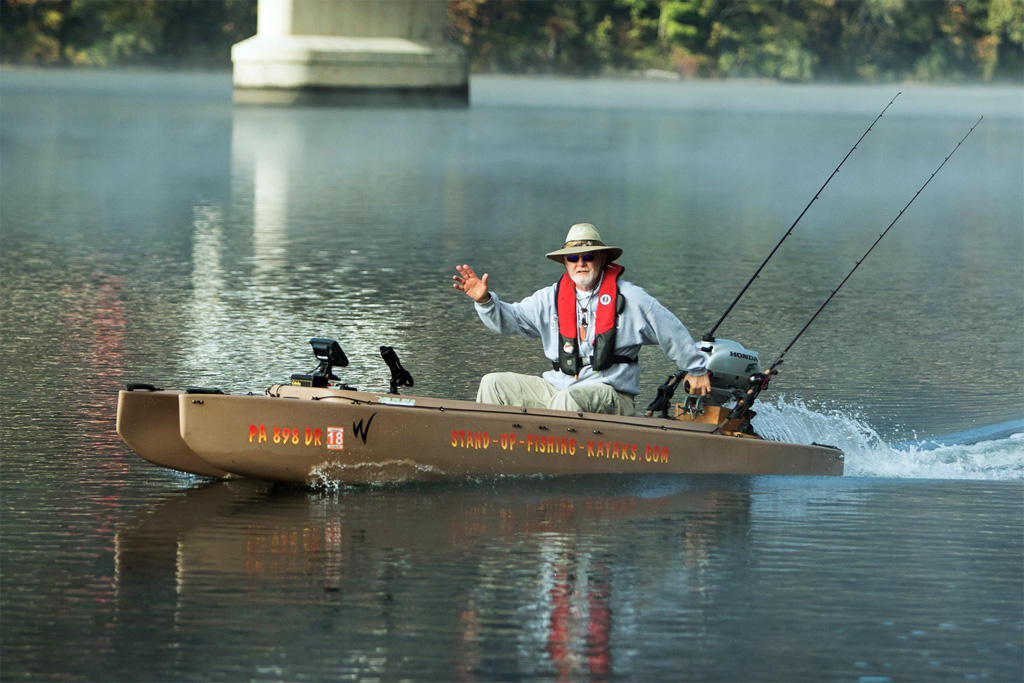
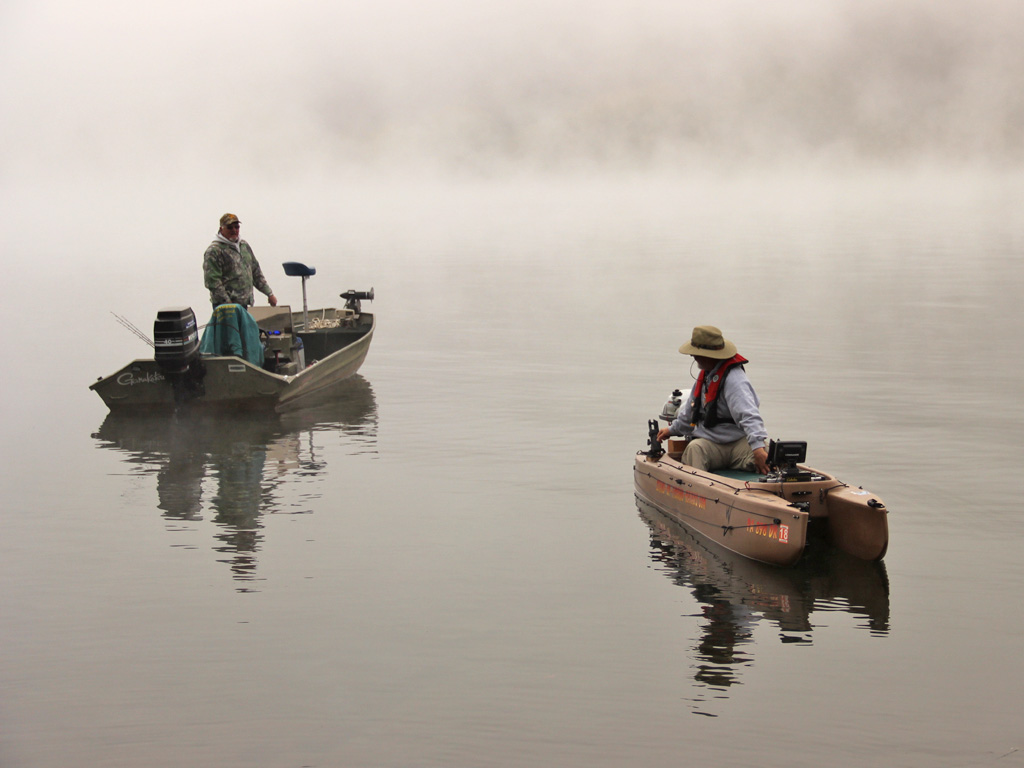
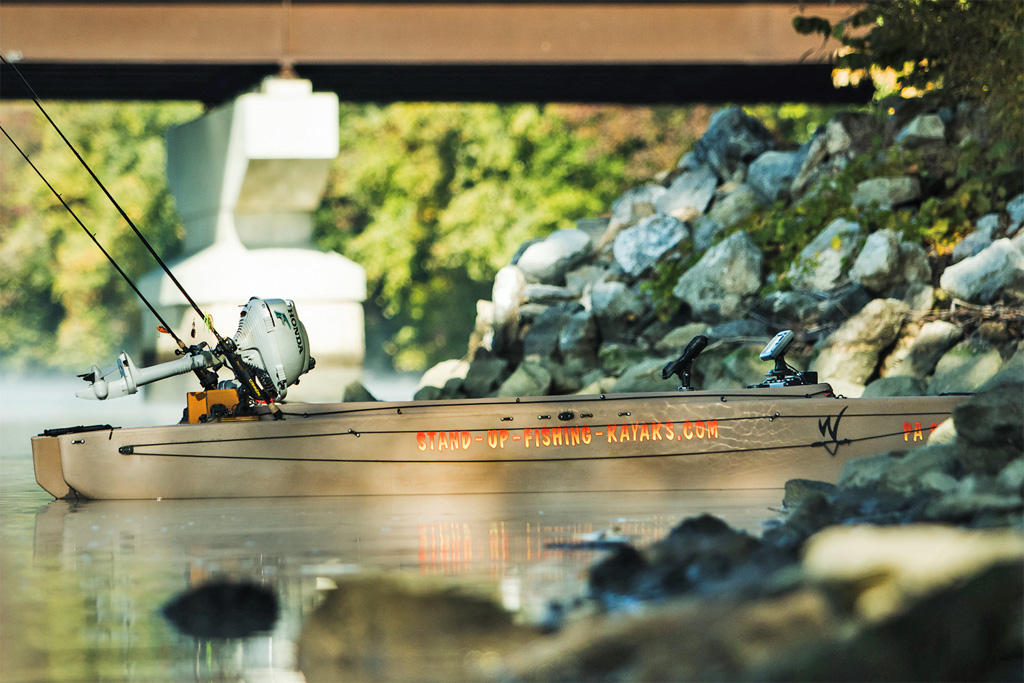
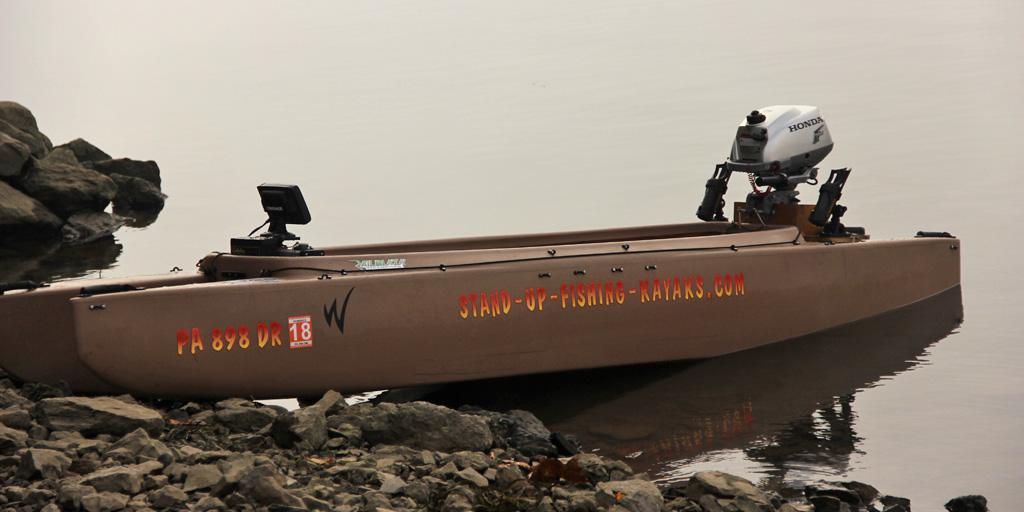
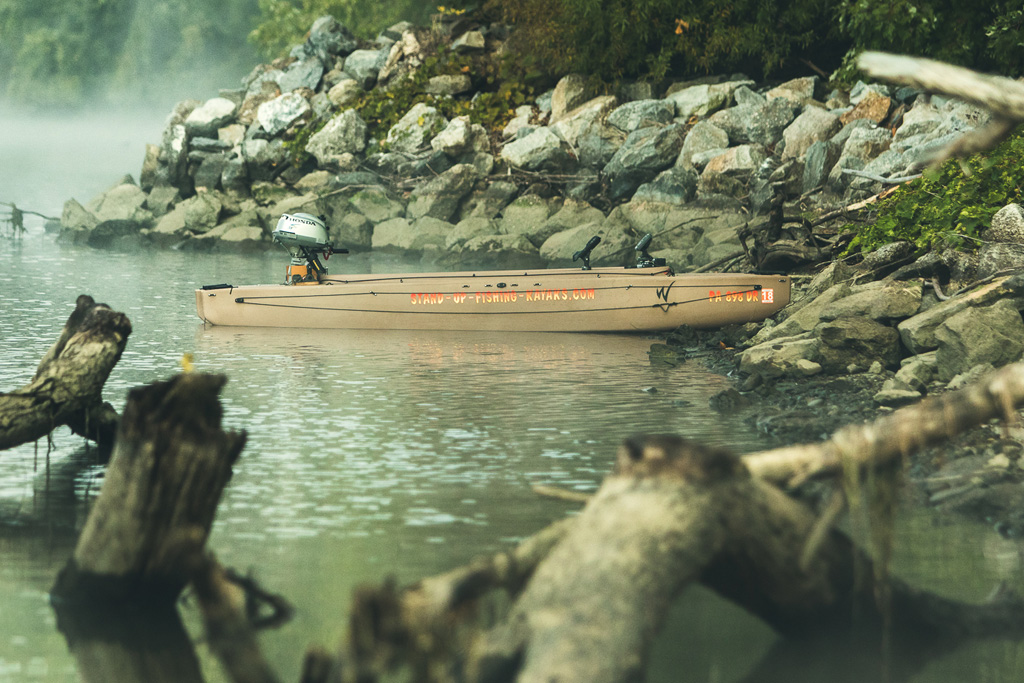
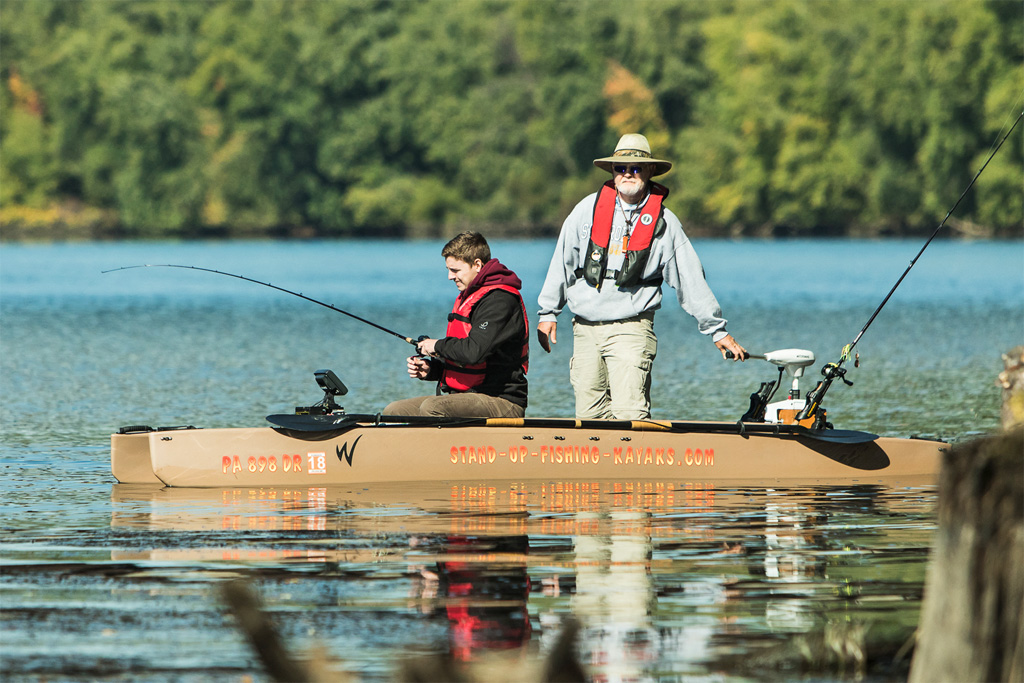
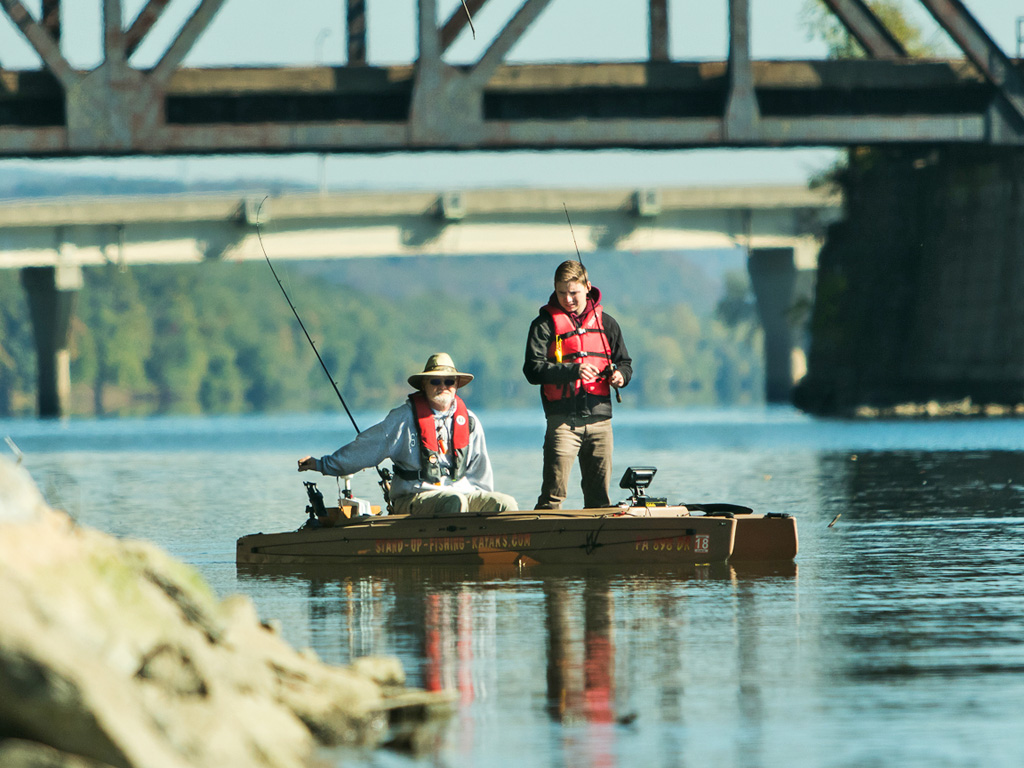
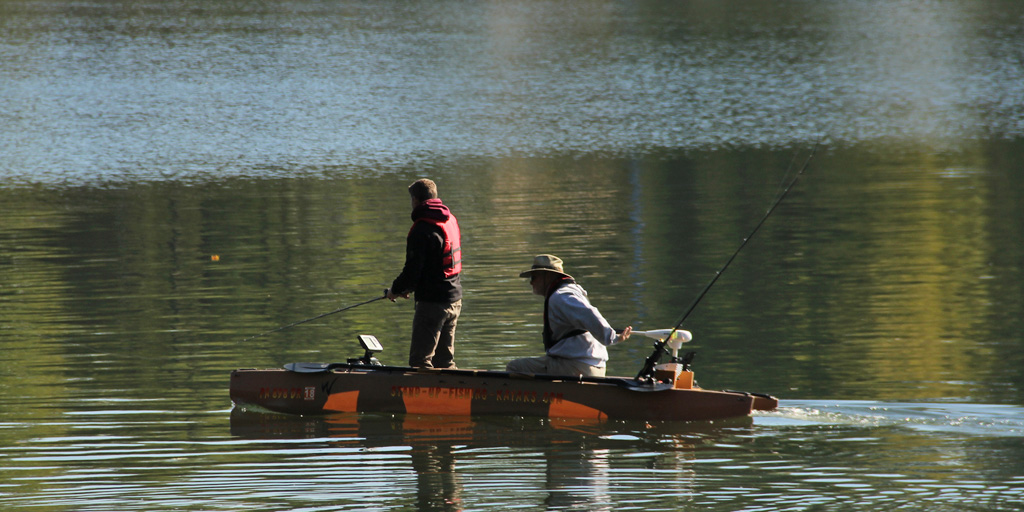
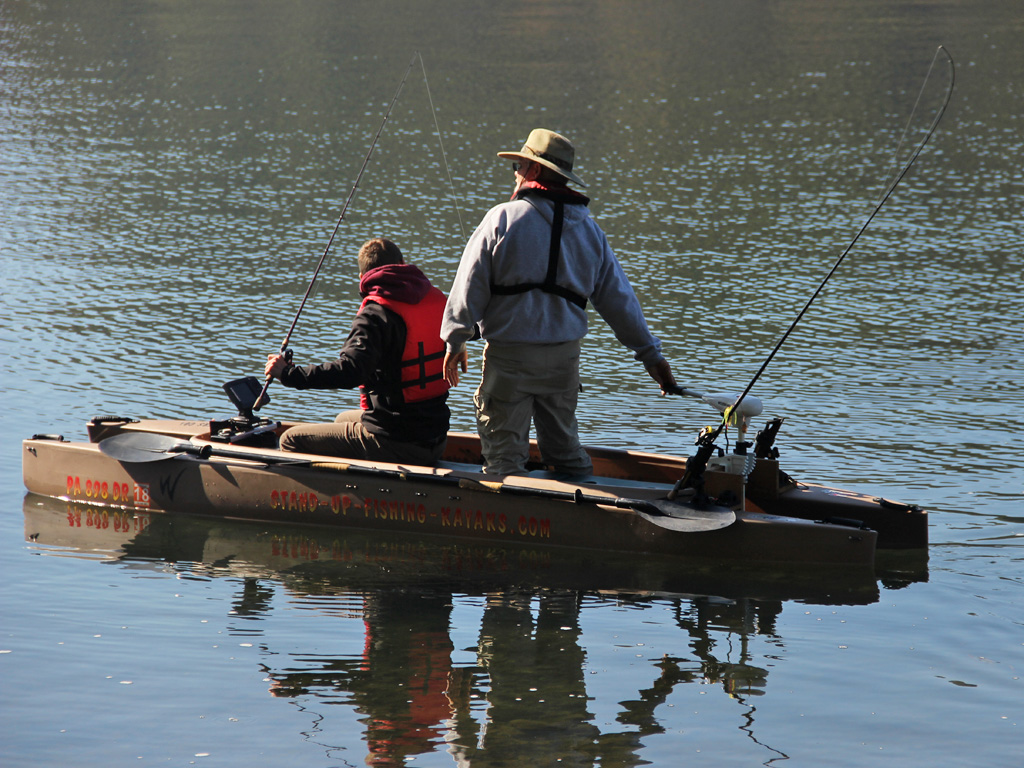
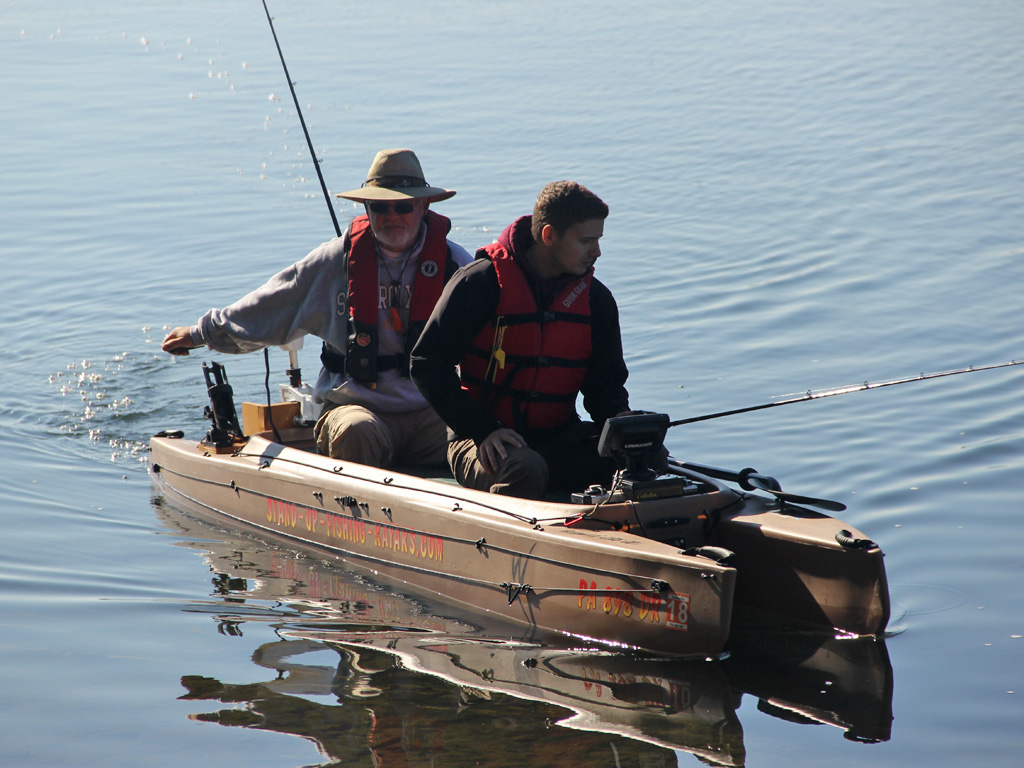
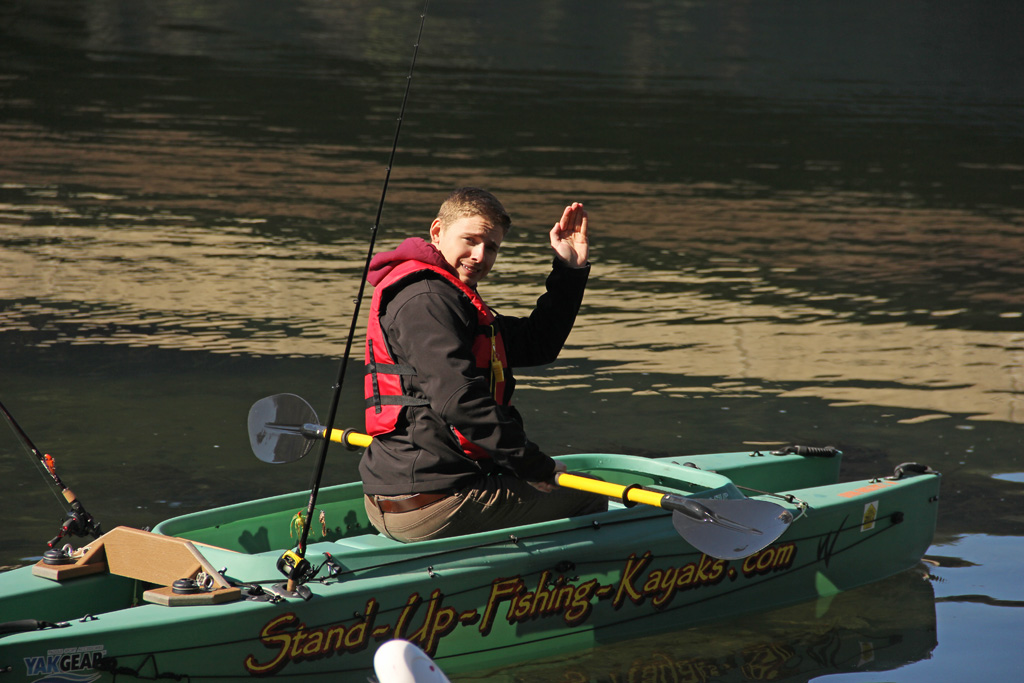
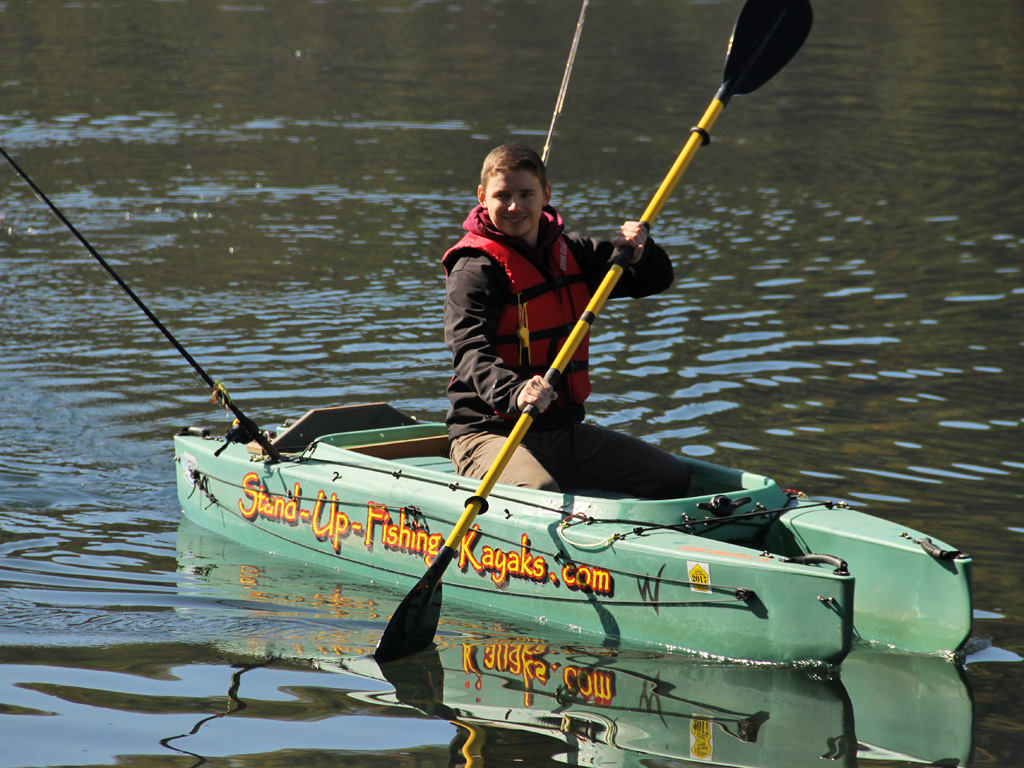
Read more about Joe’s fishing trips and rigging tips »
For some people, such as Jack from Ottsjö, carrying an electric Wavewalk 700 is very easy –
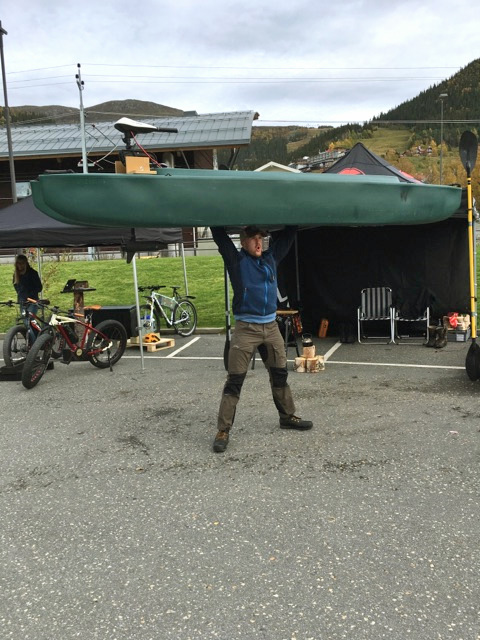

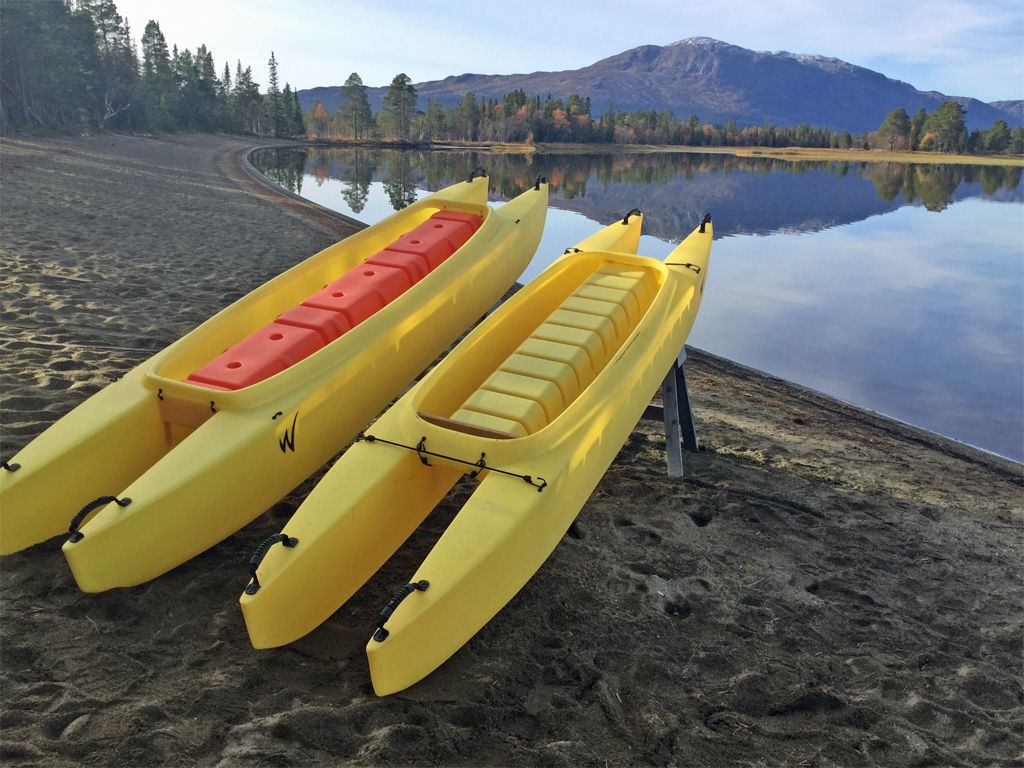
More Wavewalk fishing, paddling and boating with Kent, in Sweden »